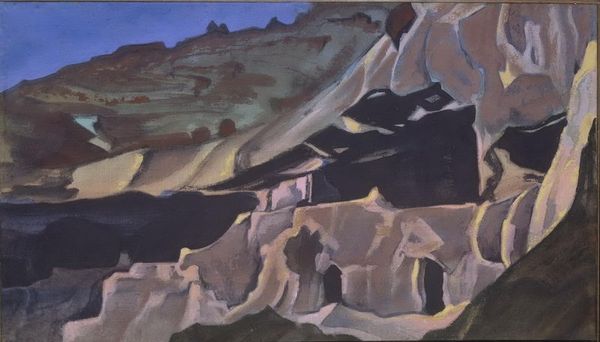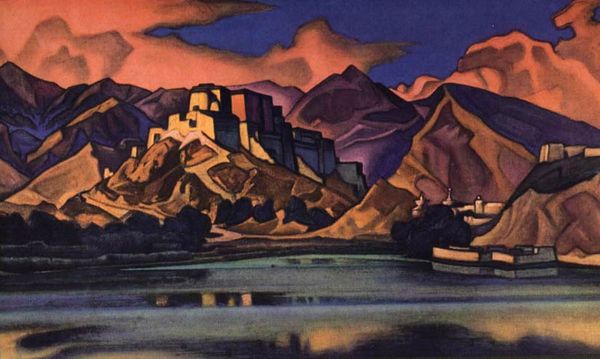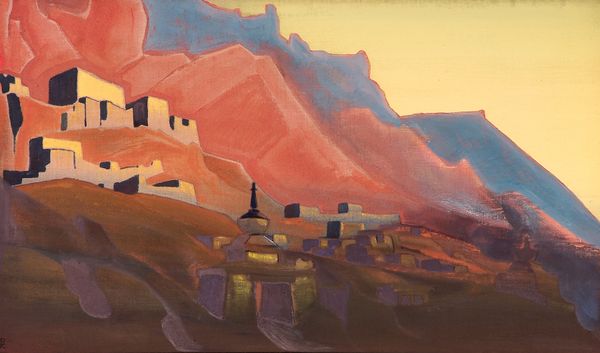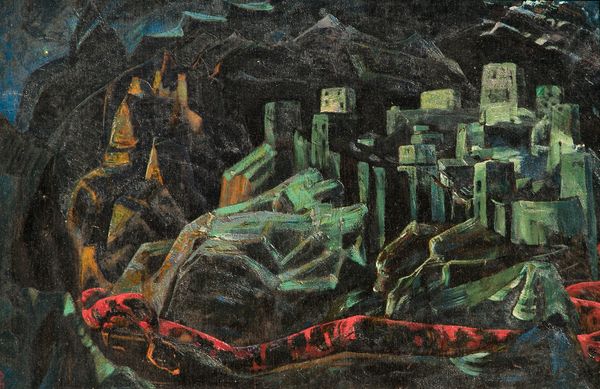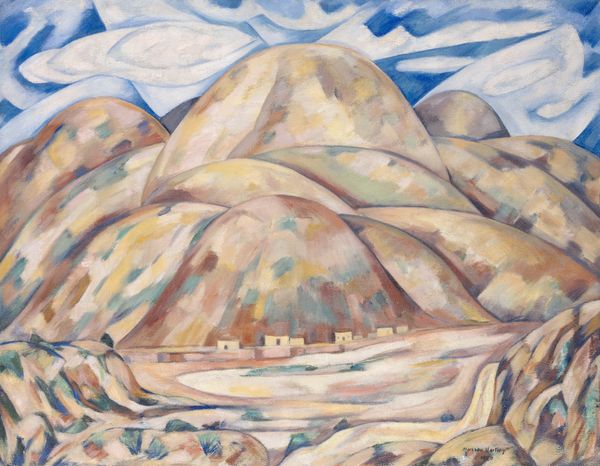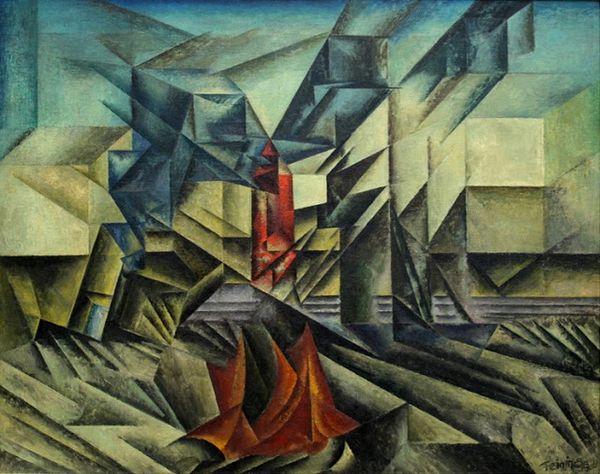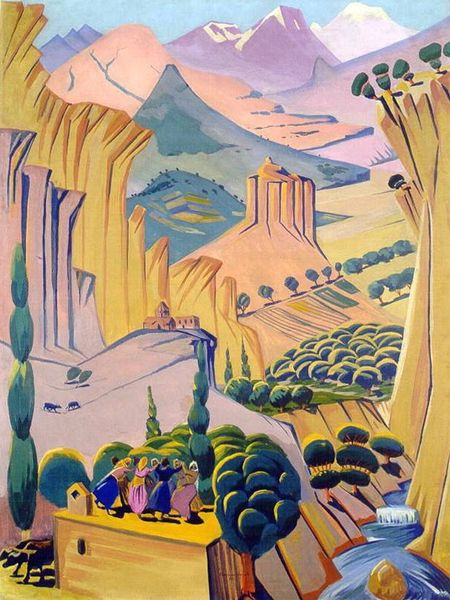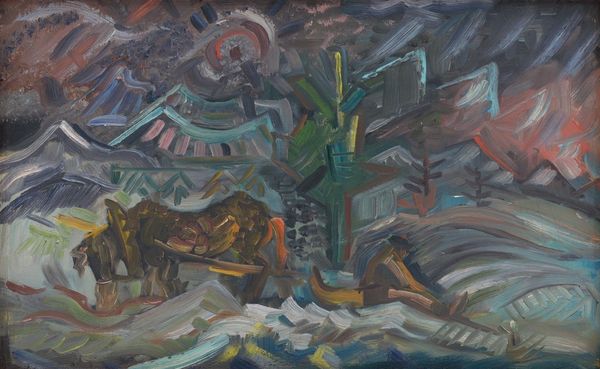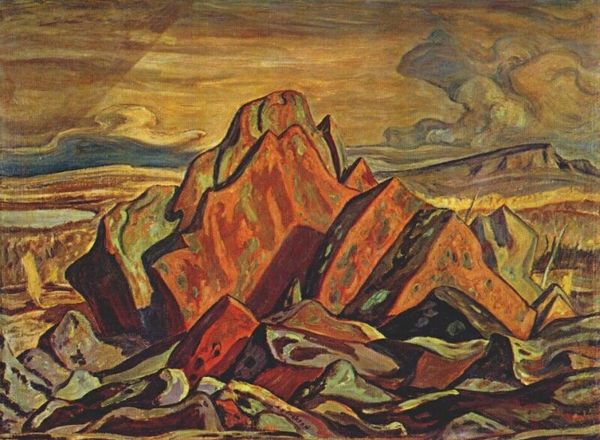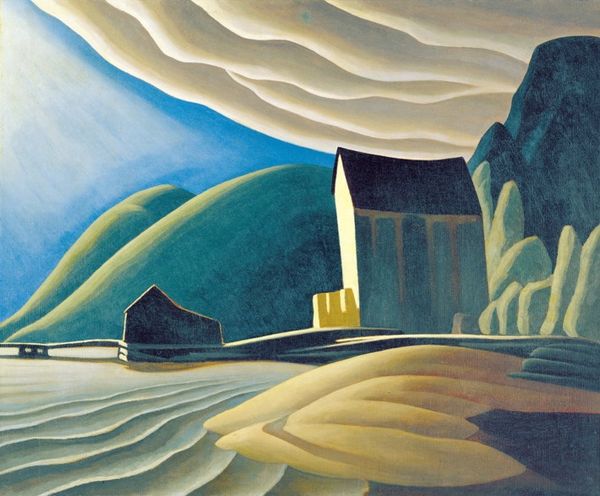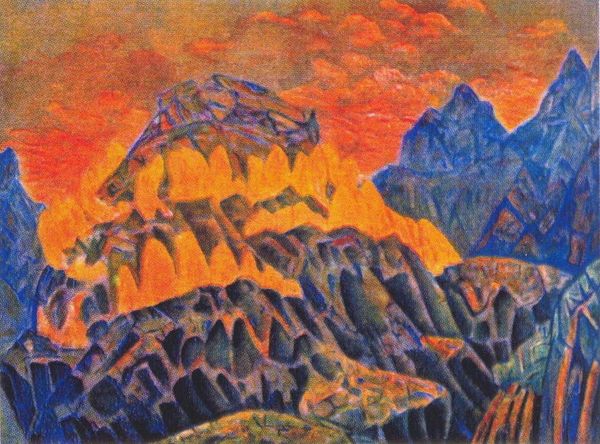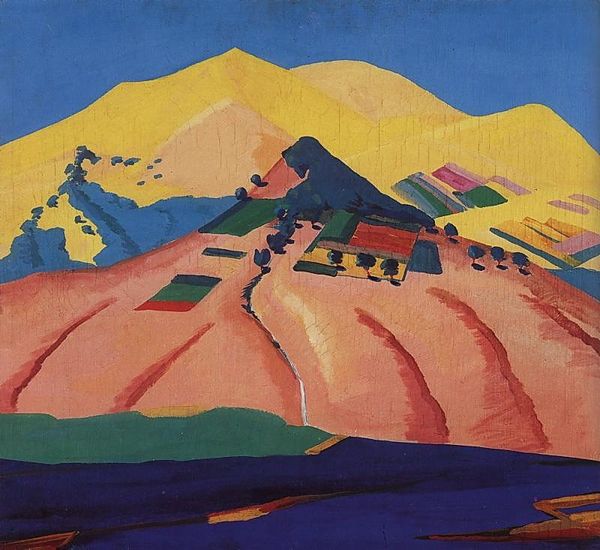
painting, oil-paint
#
painting
#
oil-paint
#
landscape
#
oil painting
#
mountain
#
symbolism
Copyright: Public domain
Editor: This is Nicholas Roerich's 1912 scene design for "Fuente Ovejuna," an oil painting. The colors feel muted, almost dreamlike, and the buildings seem to grow right out of the landscape. What's your take on this piece? Curator: Roerich's engagement with "Fuente Ovejuna" is deeply rooted in the play's themes of collective justice and peasant uprising against oppressive feudal lords. Understanding this historical context allows us to interpret the painting not merely as a stage design, but as a commentary on social hierarchies and power dynamics. Editor: So the setting itself becomes a character in the drama? Curator: Precisely! The imposing architecture juxtaposed against the natural landscape reflects the power structures inherent in feudal society. The color palette, as you observed, isn't traditionally celebratory; rather, it conveys a sense of solemnity, almost premonition. Consider also that Roerich was deeply involved in Theosophy. Do you see anything of that influence here? Editor: Perhaps in the symbolic weight of the mountains and sky? They do seem to represent more than just physical space. Curator: Exactly! Roerich used the landscape to tap into something more profound, linking the earthly struggle with spiritual and universal forces. Seeing it in light of early 20th-century anxieties around societal change gives the painting additional depth, reflecting the changing power dynamics of the time. Editor: I didn't initially connect the stage design to such broad social and spiritual concerns, but it really does reshape how I see it. Curator: Art often functions as both a mirror and a beacon, reflecting societal issues and illuminating paths towards change.
Comments
No comments
Be the first to comment and join the conversation on the ultimate creative platform.
